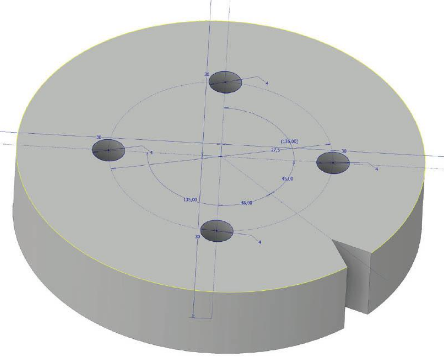CNC Milling Proccess
A milling machine can be controlled manually or automatically using a control unit
and motor-driven feeds. Manual machining uses separate hand wheels and cranks
to control feed for each axis.
However, a CNC (Computerized Numerical Control) machine can also be con-
trolled manually via its software, so the major difference between traditional and
CNC milling is that a computer takes over the basic control functions. In pre-
computer times, parts of the milling process were automated using so-called quills
to convert the rotational movement of a machine’s main drive shaft into variable
linear feed along one or more axes.
Numerical Control (NC) was the predecessor of modern CNC processes and
was developed during the 1970s, long before modern computers were invented.
NC techniques use numerical commands to control simple milling processes.
Computer control massively reduces preparation and production times and, in
conjunction with automatic tool changing (ATC) systems, enables the complete
automation of industrial production lines.
The crucial link in the CNC process is the ability to describe to the computer
the shape and size of the workpiece and its edges, corners, holes, and threads. The
tool required here is a CAD (Computer-Aided Design) program that enables the user
to precisely model the required design. Although CAD software has come a long
way in recent years, it is still quite tricky to reliably model and construct complex
workpieces.
